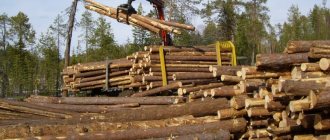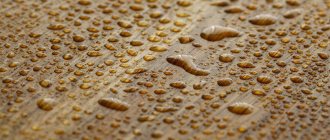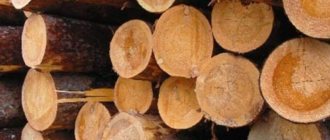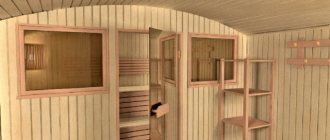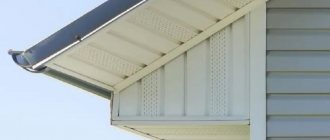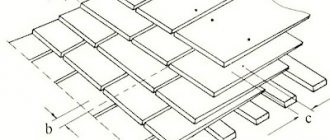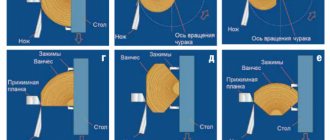Being a publicly accessible and easily renewable natural resource known to people since ancient times, wood is a universal and practical raw material from which man has learned to make a huge number of a wide variety of things, including semi-finished products, finished products and other products.
Technologies and new methods for processing this material are constantly appearing in the world, allowing it to be used as rationally as possible, taking into account all its properties and characteristics. Moreover, for this purpose, not only the main parts of tree trunks are used, but also woodworking waste, such as trimmings, chips, sawdust, etc.
Basic methods of wood processing
In order for wood to become suitable for industrial production, it must undergo appropriate processing and processing using special technologies and equipment.
In preparation for further use, wood can be subjected to various types of influences, including biological, mechanical and chemical processing.
Biological processing of wood as a process as a result of which low-quality raw materials are used to produce products used in various sectors of the national economy. These are feed protein yeasts and other valuable products of microbiological synthesis. In addition, ethyl alcohol, furfural, and xylitol are produced from it in this way.
Mechanical processing is a set of operations aimed at changing the shape and volume of raw materials without transforming its content. Most often, this process is accompanied by breaking the bonds between the fibers as a result of sawing, planing, milling and other operations.
Chemical processing involves exposing wood raw materials to chemical compounds of various types.
It includes several main production facilities:
- Pulp and paper (production of cardboard and paper);
- Hydrolysis;
- Pyrolysis (or dry distillation);
- Rosin and turpentine production.
This video will tell you how to make a wood chipper with your own hands:
Procurement of raw materials
The starting material used is wood that is of little use for other needs, and production waste, including sawdust. It is customary to distinguish several groups of raw materials:
- hardwoods: beech, birch, elm, oak, hornbeam, maple, ash;
- soft-leaved: linden, alder, aspen, poplar;
- conifers: larch, pine, cedar, fir, spruce.
There are strict production regulations, according to which all timber arriving at processing plants is sawed, cut and collected into piles of a certain width and height in special warehouses. They are placed on flat areas, providing access to air and lighting.
Preparation for pyrolysis involves preliminary drying . This process can be difficult, especially when working with solid aspen or poplar, which, with increased dampness, are prone to fungus infection and the development of rotting.
Drying is carried out naturally in the ventilated area of warehouses. To speed up the process, the material is split into small pieces. Air-dry wood is considered suitable for further processing: about 12–15%.
Sometimes quick drying is used: the massif is crushed, placed in an oven or blown with dry hot air.
Pyrolysis
The term “pyrolysis” is commonly understood as the process of “dry distillation”, the decomposition of wood when heated to 450 degrees in an airless space, producing liquid, gaseous products and a solid residue - charcoal.
Wood pyrolysis technology consists of sequentially performing the following steps:
- Breaking down the raw materials used into pieces.
- Drying wood that has been cut.
- The pyrolysis process itself.
- Cooling and stabilization of the coal mass to prevent its ignition.
- Condensation of vapors of the resulting volatile compounds.
This method of wood processing began to be practiced on an industrial scale in the 19th century, and hardwood raw materials were used to obtain the final product, which in this case was acetic acid.
And today, wood pyrolysis is carried out mainly using wood from deciduous trees (for example, birch). Much less often, during complex processing, softwood raw materials are used for this. Moreover, as a result of the pyrolysis of birch with a moisture content of 10-15%, about 25% charcoal, 50% liquid (the so-called slurry) and about 23% gaseous products are formed.
Schematic representation of the wood pyrolysis process
The resulting charcoal is sorted depending on the size of its fractions and sent directly to the customer or goes into further processing. As a result of settling of the liquid residue, a resin is obtained, from which a large number of valuable products are produced, including acetic acid, methanol, aldehydes, ketones, esters, etc.
The composition of gaseous products formed as a result of wood pyrolysis includes dioxide (45-55% of the total mass), carbon monoxide (28-32%), methane (8-21%) and other hydrocarbons.
Carrying out the process at home
Wood pyrolysis technology is used both on an industrial scale and at home. One example of the individual use of this method of wood processing is a home pyrolysis installation, designed for recycling wood waste and obtaining free energy for heating greenhouses, utility rooms and residential buildings.
The efficiency of such a heating device, which you can assemble with your own hands, is about 90%! It runs on environmentally friendly fuel and is economical and practical in operation.
In this case, assessing wood as an energy source on a generally accepted scale of five points, this material can be assigned “excellent” for its availability, low cost and practicality.
Types of decomposition processes
There is slow and fast pyrolysis of wood (MP and BP). The heating rate of the material in the first process is degrees per minute per hour, in the second the pyrolysis temperature is hundreds of degrees per millisecond. MP is compared to the process of boiling water, BP is similar to the moment water enters an already heated substance (explosive boiling).
Rapid heating destroys the particle structure at the molecular level.
This returns the substance to a solid or gaseous state, its original stage, allowing the extraction of more processed products (synthetic gas, oil; pyrocarbon, thermal energy).
Benefits of BP:
- Reduces production energy costs by >30%.
- Obtaining chemically pure products due to the short residence time of the substance at high temperatures. There is no risk of the material being subjected to heat treatment a second time.
- Facilitate temperature changes. There is no need to interfere with the design.
- Possibility of processing different materials on the same installation.
Drawings of a rapid wood pyrolysis installation imply the presence of gas generators (heat treatment furnaces), cooling systems and filters and other components.
Gasification of wood
One of the options for processing wood is its gasification - a process that involves converting solid raw materials into gaseous fuel. Unlike combustion, this technological operation is carried out with a limited supply of air into the gas generating unit, sufficient only for the formation of carbon monoxide.
Gasification includes two main processes: direct and reverse. When the first occurs, the movement of gases in the gas generator occurs in the direction from bottom to top. That is, air passes into the installation through a special hole - a blower located under the grate, and products obtained as a result of gasification are discharged through the upper part of the device.
In installations operating on the reverse principle, the movement of gases is in the opposite direction: from top to bottom. The air supply is made through a hole above the grate, and gasification products exit at the bottom of the generator.
The main purpose of this type of processing is to obtain combustible gas used to generate energy while simultaneously recycling timber waste. The most common examples of practical applications of gasification are gas-generating solid fuel boilers, as well as internal combustion engines, etc.
Operating principle of the Trayan long-burning gas generator boiler:
Operating principle of a pyrolysis furnace
The pyrolysis furnace consists of a body. There is a built-in firebox installed inside. It contains wood or other raw materials for processing. When the firebox compartment is closed, no air enters. The structural elements are sealed - the oven door closes tightly. The installation has a ventilation system for supply and exhaust functions.
Under pyrolysis conditions, fuel burns slowly. After placing the raw material into the compartment, it is set on fire. It will take time for the material to burn. Then the access to oxygen is blocked. Due to lack of air, combustion slows down and the wood becomes charred.
The process releases powerful thermal energy. The effect is due to the fact that at low oxygen concentrations the material burns slowly. The result of the process is coke, ash and gas. The hot gas inside the boiler interacts with the air and burns at a high temperature. This reaction is accompanied by the release of heat.
The pyrolysis plant operates in two stages:
- First, the material sent to the compartment burns. At this stage, oxygen access is blocked. A flammable gas mixture is released.
- In the second stage, the mixture of the released gas and air burns.
A two-stage operating principle is used in homemade pyrolysis furnaces with afterburning gases:
- "Powerbelly stoves";
- Wood stoves;
- Solid fuel generators.
Waste materials are discharged by a rotating retort. This is a round-shaped product that rests on the stove support.
Hydrolysis
One of the common methods of wood processing is its hydrolysis, a specific process during which wood raw materials are exposed to weak acids. In industrial production, hydrolysis reactions take place in special devices - autoclaves, where the feedstock, sulfuric acid and steam are placed.
In the autoclave, certain conditions are created (elevated temperature and pressure level), as a result of the combination of which with the action of acid, cellulose and hemicellulose, which are the main components of wood, decompose. During this process, solutions of simple sugars are formed, containing lignin and volatile substances in the solid state.
The solid part of wood, lignin, is a by-product of this type of processing. It is separated from the mass of the general solution, which is sent to the evaporator, where furfural, vapors of acetic and formic acids and methyl alcohol are released from it.
After this, slaked lime is introduced into the remainder of the solution, which neutralizes the sulfuric acid, resulting in the formation of gypsum sludge and purified sugary substances. These substances are sent for further processing, undergoing fermentation, after which 1.2-1.6% ethyl alcohol is released from them.
From the remaining part of the mash, stillage is obtained, which is used for the production of the most important product - feed yeast and serves as a binding component in the manufacture of foundry molds, etc.
How to make alcohol from sawdust
The “building” material of tree plant cells is hard fibrous cellulose. Its content in plants reaches 70%. Fiber contains a lot of polysaccharides, which, under certain chemical influences, turn into glucose. From the latter, after fermentation and distillation, alcohol is obtained. This means that the biomass of small sawdust and wood shavings from waste is converted into valuable raw materials for the production of alcohol - ethanol or butanol.
Ethyl alcohol can be produced in the following ways:
- Hydrolysis of crushed woody biomass and subsequent fermentation of the resulting product with yeast. This is the most common method for processing sawdust.
- Gasification of wood by pyrolysis and further fermentation of the resulting gas into alcohol.
- Gas synthesis during pyrolysis decomposition of sawdust fiber. Methanol is then produced from the gas, which is converted to ethanol through a homologation reaction.
Equipment for processing and crushing wood
To obtain the final product from raw materials of wood origin, various types of equipment are used, including:
- Low-speed shredders used to produce chips with sizes ranging from 8 to 10 mm.
- Shredders are used to shred wood waste of various sizes. They use special cutting knives as the main element.
- Horizontal shredders. Process long and short waste.
- Briquetting presses. Used to make briquettes intended for heating.
- Silos. Designed for storage, transportation and unloading.
This is what a standard machine designed for chopping wood into chips looks like
Shredders
Wood chippers are devices whose main purpose is to process wood with defects and its waste such as slabs, slats, as well as cuts and branches into chips for technological purposes.
Based on the type of structure of the working body, these units are divided into the following groups:
- Drum choppers. (Includes knife, cutter and hammer type machines).
- Disk.
- Rotary.
By download type:
- Machines with horizontal
- and inclined loading.
By type of unloading:
- From the top
- and bottom unloading.
By nature of use:
- Mobile
- stationary.
Hammer crushers
A hammer crusher is a mechanical crushing machine used to destroy raw wood by hitting hammers fixed on a rotor rotating at high speed or destroying wood tissue by hitting its pieces against the plate of the device body.
This unit has many positive characteristics, including:
- Versatility (can work with any type of waste).
- Power. (it is possible to process branches with a diameter of up to 46 cm).
- Zero waste.
Crushing machines
Wood crushing machines are commonly called special equipment used for crushing and grinding wood and wood waste. The result of such processing is chips - small wood particles used for various purposes.
There are crushers of stationary and mobile types, used in woodworking shops or for export. They can have different capacities, allowing these units to produce the final product of various compositions and fractions. The wood chips are then used as fuel or to make other products.
The video shows the operation of a wood chipper:
Manufacturing of pyrolysis furnaces
When deciding how to make a pyrolysis oven with your own hands, you need to take into account the area and type of space to be served. The work is carried out on the basis of drawings, for the creation of which it is necessary to determine the dimensions and shape of the body, specify the type of location of the compartment for loading solid fuel and the gas afterburning chamber.
Materials and tools
To manufacture a metal pyrolysis combustion installation, you should collect the following set of auxiliary materials and tools:
- steel sheets 3-4 mm thick, grade St20,
- steel corners 50 mm – 4 pcs.,
- pipe d50,
- reinforcing elements,
- chimney pipes d120,
- bricks – 15 pcs,
- electric welding machine plus electrodes,
- electric drill, grinder,
- hammer, building level, tape measure, marker.
To manufacture a metal pyrolysis combustion installation, you should not forget about the grinder.
When choosing materials for making a gas generator yourself, you should give preference to high-quality and reliable resources, the efficiency of the device and the safety of operation depend on this.
Drawings and calculations
You can make a drawing of the product yourself, using the image of the selected unit as a basis. Next, taking into account the features of the device, the required power is calculated. To do this, first determine the required power of the installation in the flame combustion mode, then calculate the parameters in the gas generation mode.
Wood recycling
One of the most important stages of wood processing production is the processing of wood waste. Most often, by-products of its production are used as an inexpensive source of energy. This processing industry is very promising and is actively developing at present.
In addition, other methods are used to recycle wood. These include:
- Production of charcoal and charcoal briquettes.
- Briquetting of small wood waste.
- Gasification.
